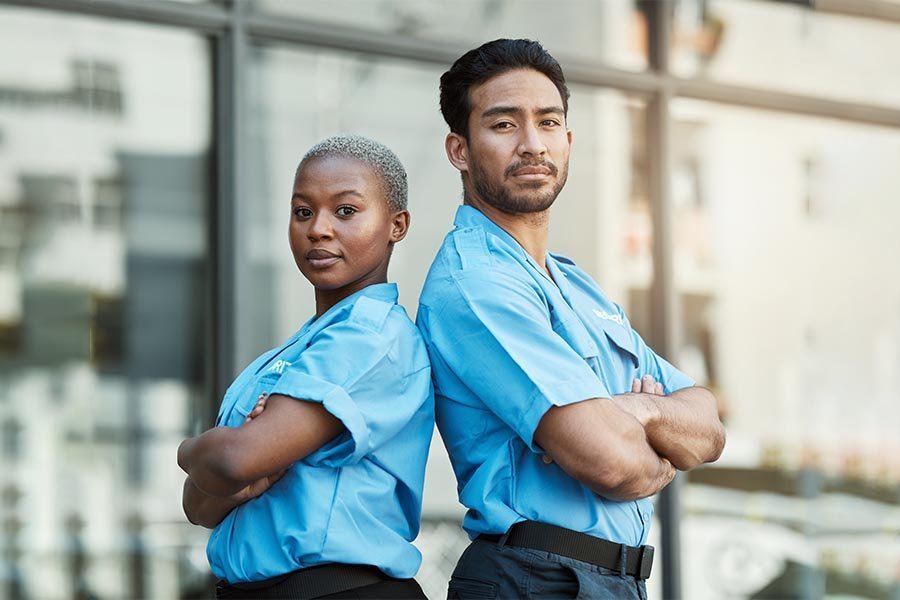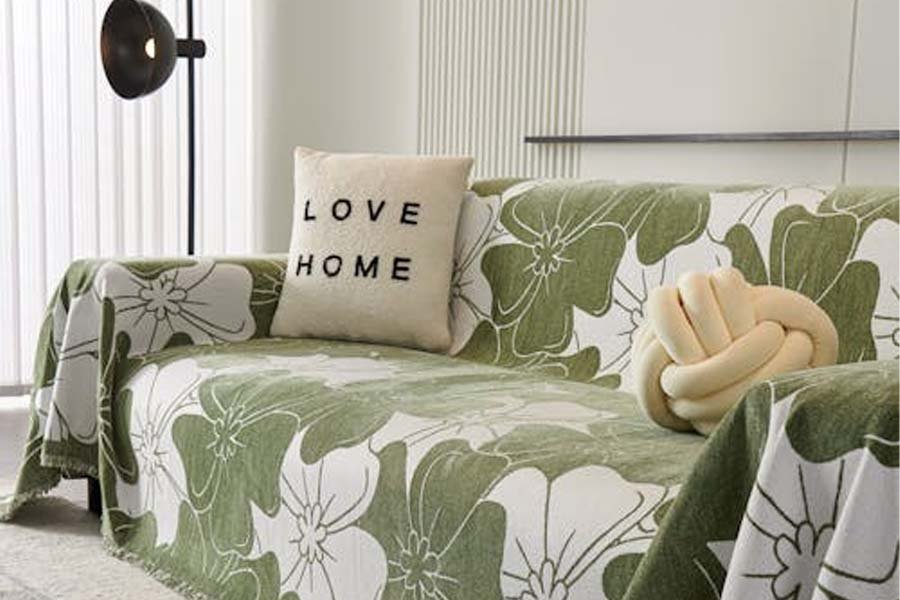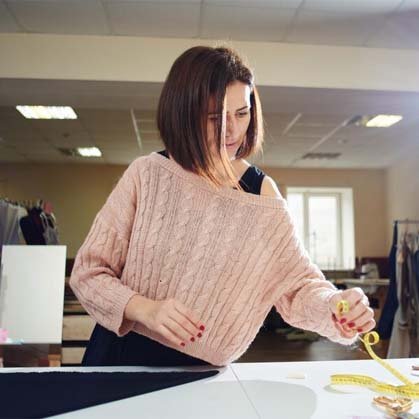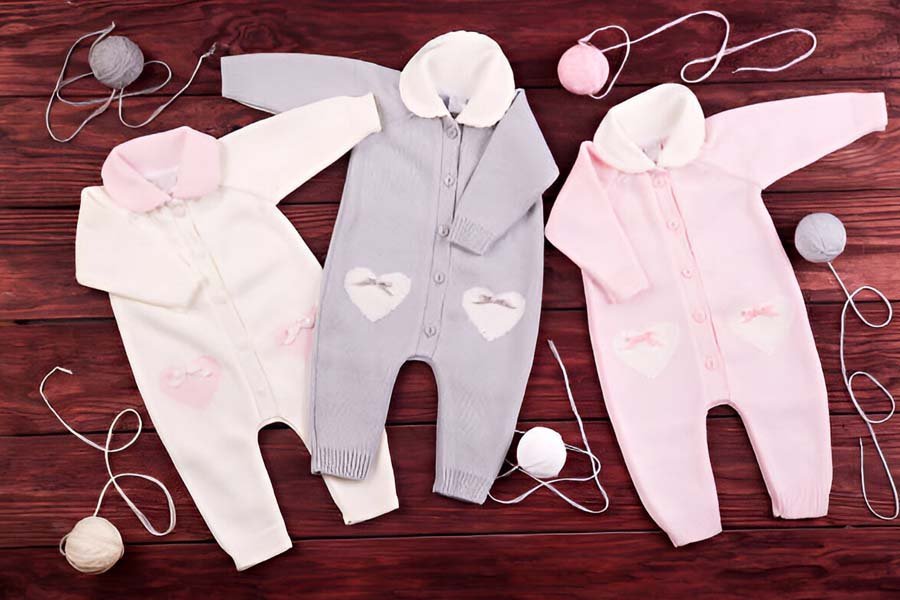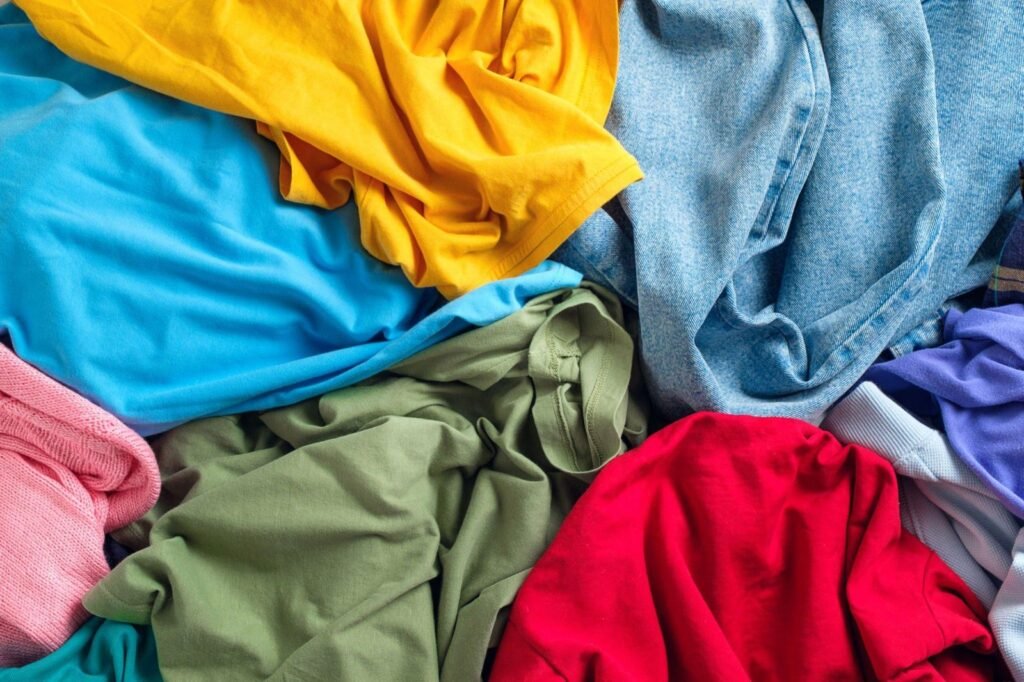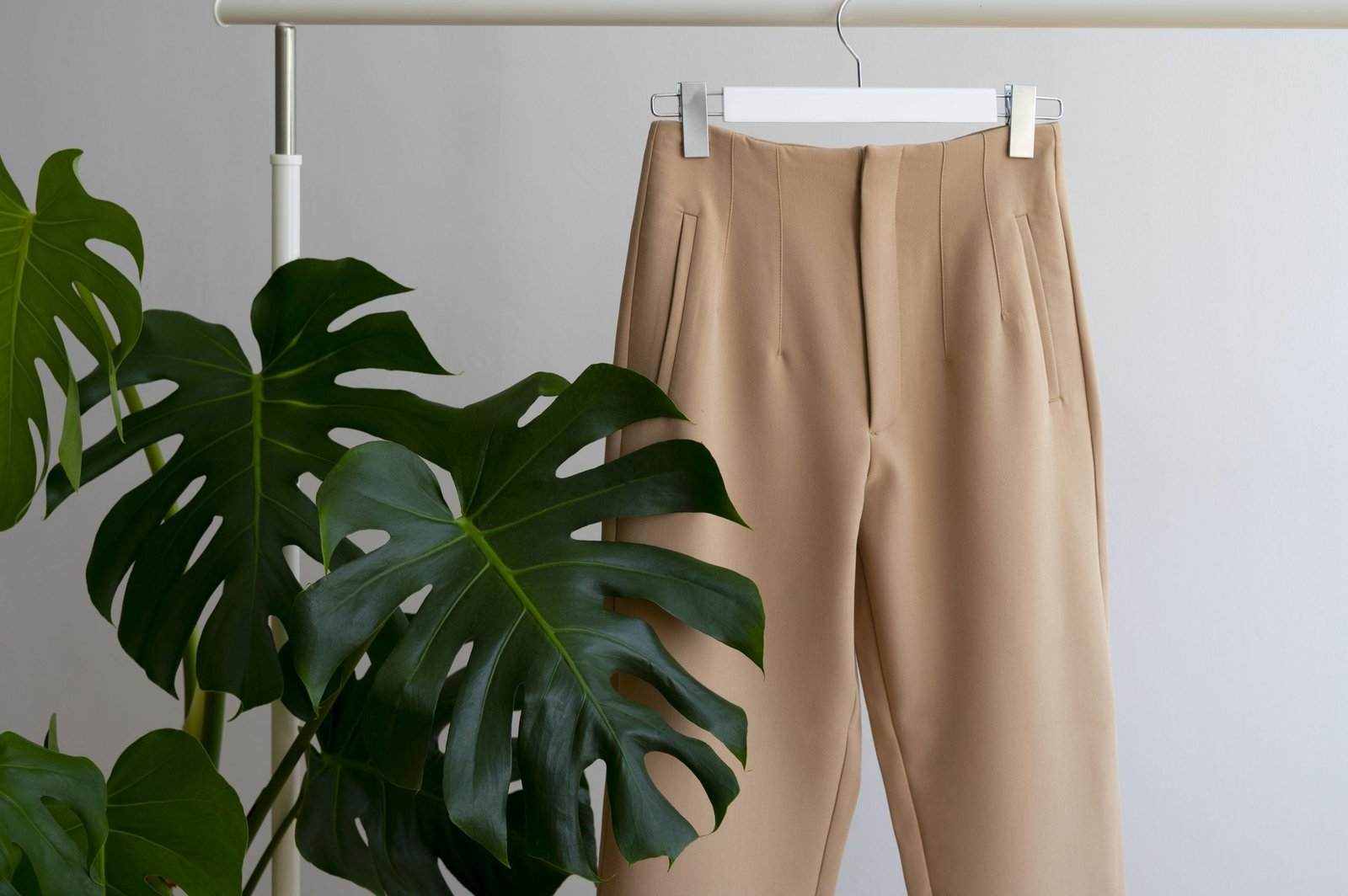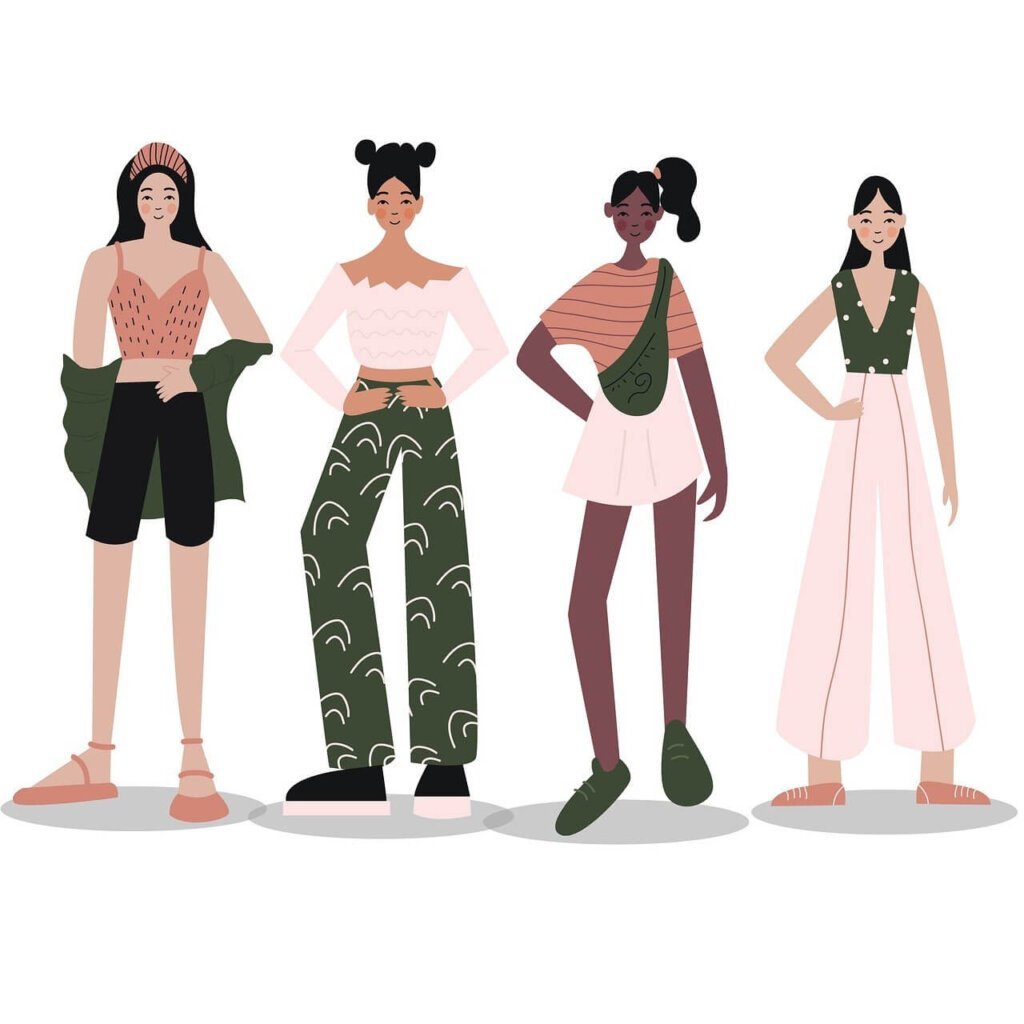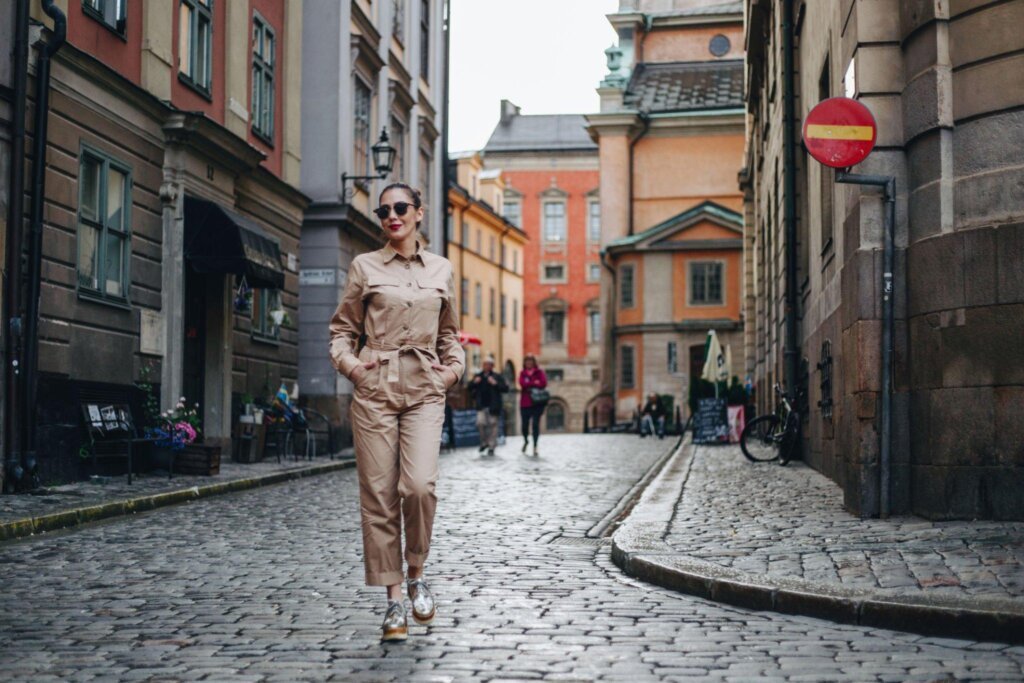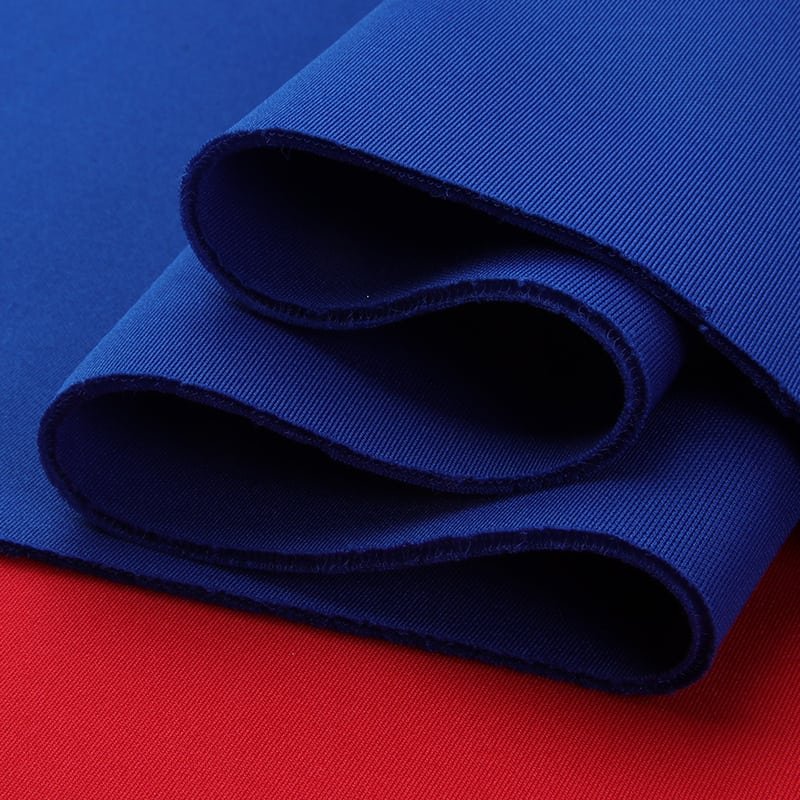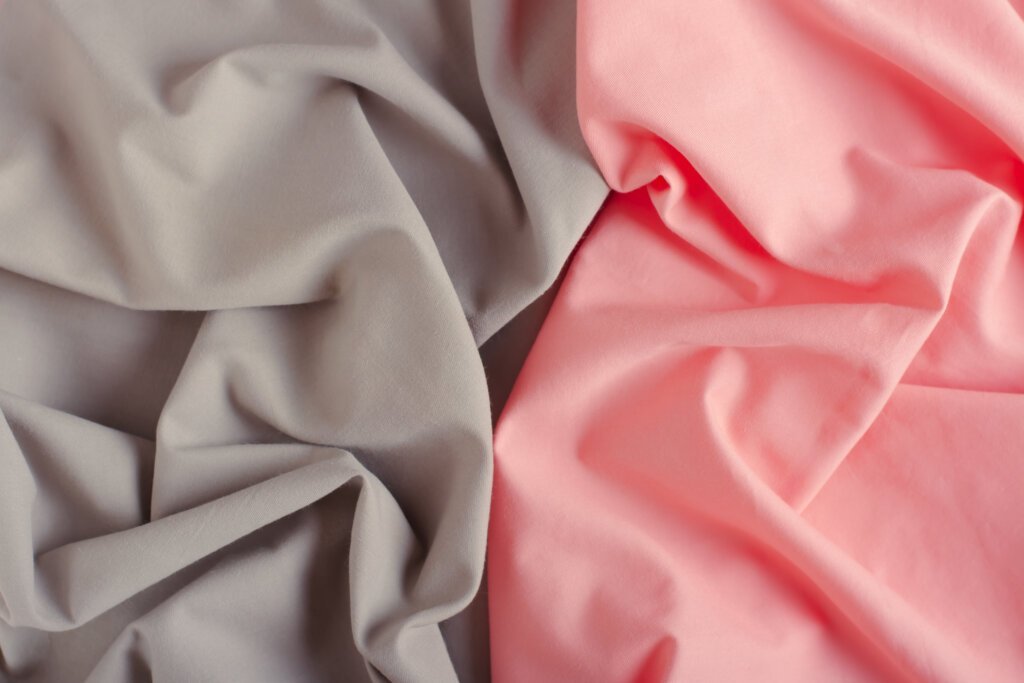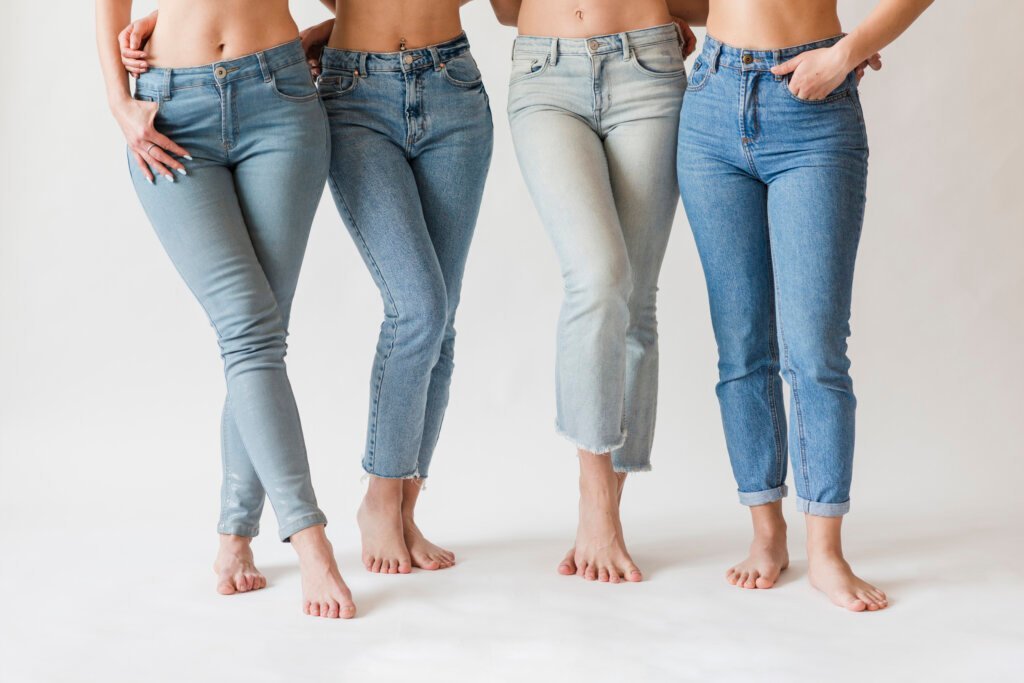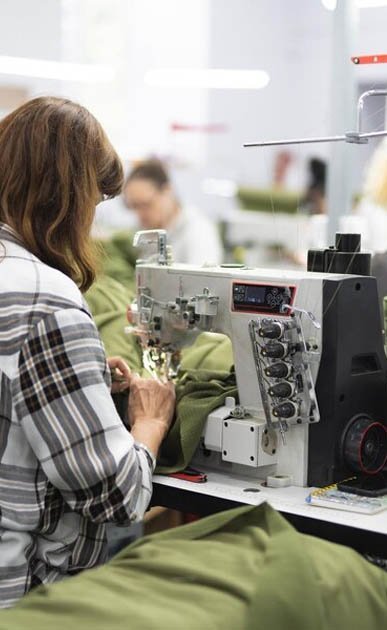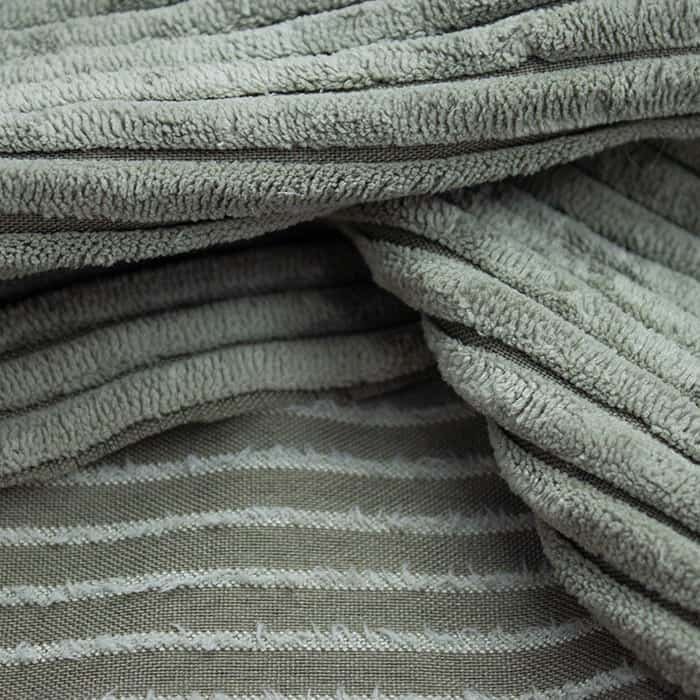
Corduroy fabric was initially designed for laborers’ functional wear. But, it eventually caught the attention of the elite and became a fashion statement.
Corduroy fabric is renowned for its ribbed or cord-like texture. This was achieved by weaving or knitting a combination of cotton or a cotton blend.
This textile has been a staple for centuries, and it remains a beloved material in fashion today. A lot of people like to wear clothes made from corduroy fabric because of the unique vertical ribbing design.
But what really makes corduroy special is its captivating history, which traces back to ancient Egypt.
What Is Corduroy Fabric?
Weaving or knitting cotton creates the ribbed texture of the corduroy fabric. It is a unique kind of fabric that has raised lines, like cords. It feels bumpy when touched.
Corduroy today is usually made with many little cords sticking up together.
It’s a tough, warm, and bendy fabric that’s perfect for making clothes. Lots of people like to use it to make pants, jackets, and skirts.
Corduroy is available in various colors and patterns, making it versatile for design needs.
What Materials Are Used to Make Corduroy Fabric?
Corduroy is a thick and heavy fabric that’s good for colder weather. It’s usually made of 100% cotton or a mix of cotton and synthetic fibers like polyester or nylon. Wale count, thickness, and color fastness influence corduroy’s texture, appearance, and longevity.
Materials used in manufacturing corduroy fabric:
Cotton
Cotton is the primary material used in the production of corduroy fabric. It is a soft, breathable, and durable material that is ideal for clothing. Corduroy fabric uses strong, high-quality cotton with a long staple length, which makes it strong and resistant to wear and tear.
Polyester fibers
To make a tougher and stronger fabric, people mix polyester and cotton together. This blend creates a corduroy cloth that doesn’t wrinkle or crease as much as pure cotton cloth.
Spandex
Manufacturers use spandex, a synthetic fiber, in the production of corduroy fabric. They add it to the fabric to enhance its elasticity, which results in a comfortable fit to the body’s shape.
Chemicals
Chemicals can enhance the properties of corduroy fabric. Softeners create a smoother texture, while anti-static agents reduce static electricity. Flame retardants can increase the fabric’s resistance to fire.
The weaving process of corduroy fabric
Follow a step-by-step guide to the weaving process and learn how to make corduroy fabric.
Yarn preparation
First, you have to pick colors, dye the yarn, and spin it onto spools or bobbins when preparing the yarn.
Cotton is the most commonly used fiber for corduroy, although other materials can also be used. The yarn is chosen based on strength, durability, and texture.
Warping
During the warping stage, the weavers use a beam to measure and wind the warp yarns before threading them.
The loom is the machine used to weave the fabric. The warp yarns are wound vertically onto the loom, while the weft yarns are wound onto bobbins.
Threading
The weavers put the warp yarns through the loom in the pattern they want while threading.
The weft yarns are passed over several warp yarns and then under one, creating the ribbed texture.
Note: The warp is the lengthwise yarn while the crosswise yarn is the weft.
Tying-up
During the tying-up process, the weavers tie up the warp yarns to the loom in preparation for weaving.
Weaving
To make corduroy, weavers weave the weft yarns in and out of the warp yarns.
The weft yarns are passed through the warp yarns using a foot pedal to raise and lower them.
To create a raised ribs design, the pile yarn is wound onto a beam and then fed through the fabric using needles.
Cutting
The weavers cut the cloth and checked that it was good while cutting.
Finish the corduroy fabric
Once the weavers complete the weaving process, corduroy fabric undergoes washing and drying. You can brush or shear the corduroy fabric to create an even texture.
By following these steps, you can create a durable and textured corduroy fabric.
Common Corduroy Fabric Styles
Jackets
Corduroy jackets are a popular choice for fall and winter. They can be styled in various ways, from a casual everyday look to a more formal outfit.
Pants
Corduroy pants are comfortable and warm, making them perfect for colder weather. They come in various colors and styles, including bootcut, straight-leg, and skinny.
Skirts
You can style corduroy fabric skirts in a variety of ways, from a casual everyday look to a more formal outfit. There are a variety of lengths available, from mini to maxi.
Dresses
Corduroy-fabric dresses are adaptable and suitable for various occasions, from casual to formal. You can style them with tights and boots to achieve a cozy winter look or with sandals for a summer outfit.
Upholstery
Corduroy fabric is also a popular choice for upholstery, particularly for furniture. It is durable and easy to clean, making it ideal for sofas and chairs.
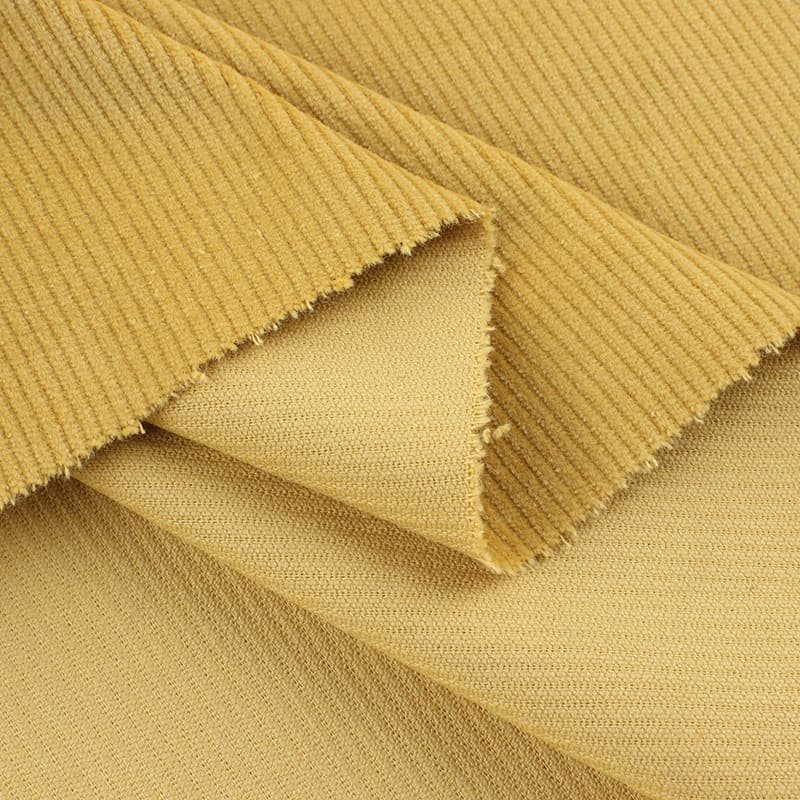
Different Types of Corduroy Materials
Corduroy fabric comes in a variety of types, each with its own distinct features. Selecting the appropriate type is crucial to achieving the desired appearance and texture for your next project!
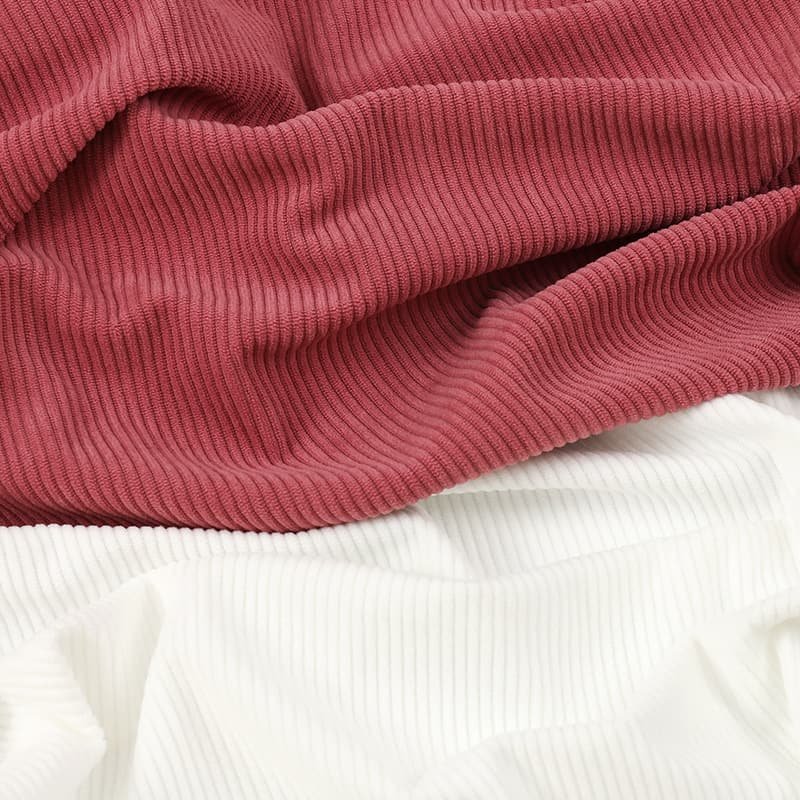
Standard corduroy
A standard corduroy fabric has narrow, thin cords, usually about 1/8 inch wide.
This is the most common type of corduroy material. It has a medium ribbed pattern. It is durable and has a soft, comfortable feel. Corduroy cloth has 11 lines per inch on average. If it has around 8 to 13 lines per inch, it’s still called standard corduroy.
Standard corduroy can come in a variety of colors but is often seen in earth tones such as brown, tan, and olive green
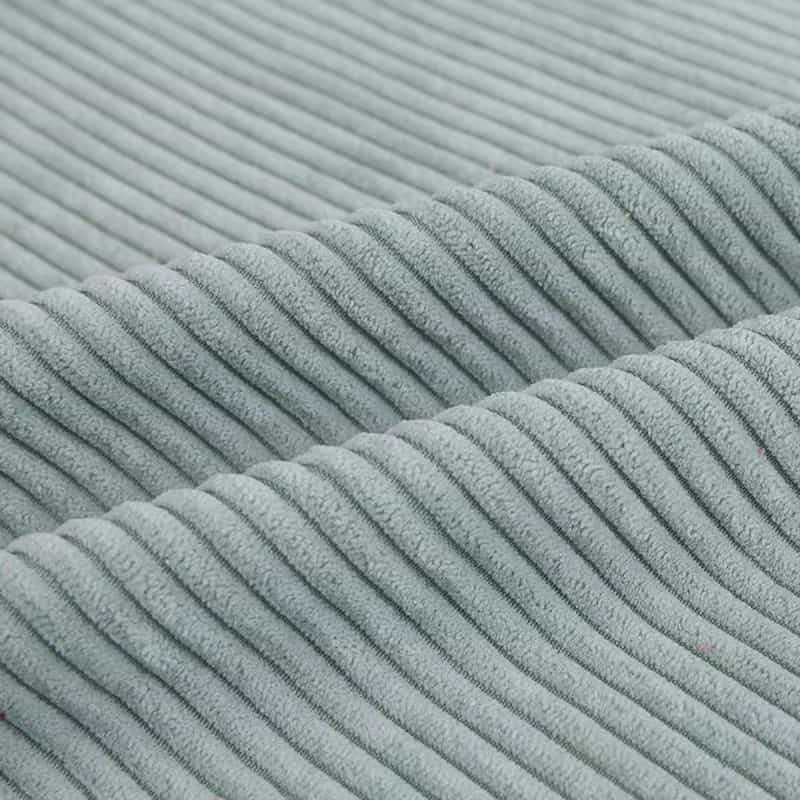
Elephant Corduroy
Elephant corduroy fabric has wider cords and deeper ridges. It has a more textured and rugged appearance than standard corduroy.
People usually call it an “elephant cord.” It features large, bulky cords that are thick in size. Depending on the specific product, elephant cord fabric can have wale numbers ranging from 1.5 to 6.
It’s commonly used for upholstery, jackets, pants, and other clothing items due to its durability and unique texture.
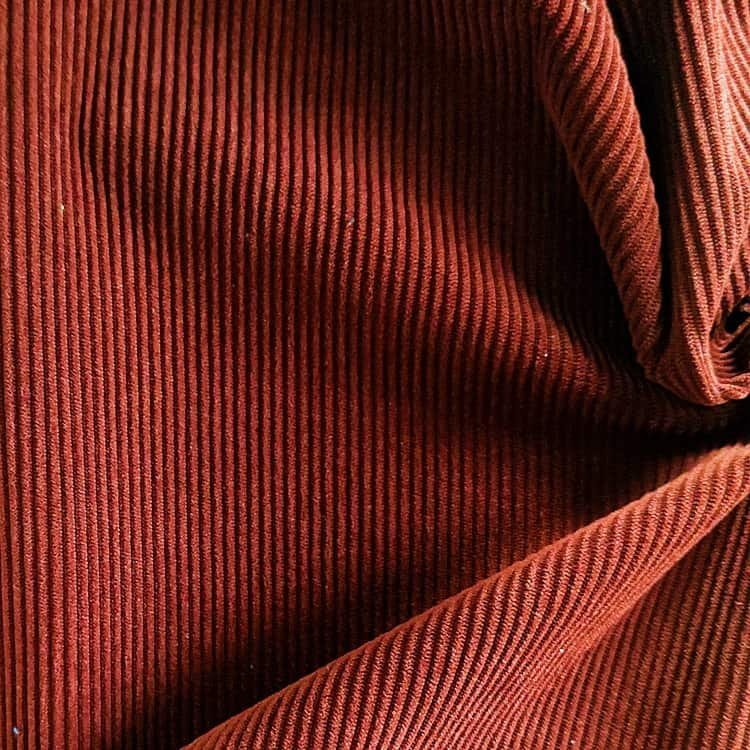
Pinwale corduroy
Pinwale corduroy is a fabric with thin, spaced cords resembling a pinwheel. This corduroy fabric has a soft, lightweight feel to it.
Pinwale corduroy has lots of tiny ridges in every inch of fabric, unlike elephant cord. In its highest quality variations, pinwale corduroy can possess as many as 21 ridges, or “wales,” per inch.
It is perfect for clothing items such as shirts, dresses, and skirts. This type of corduroy fabric is popular in warm weather or as a layering option in cooler weather.
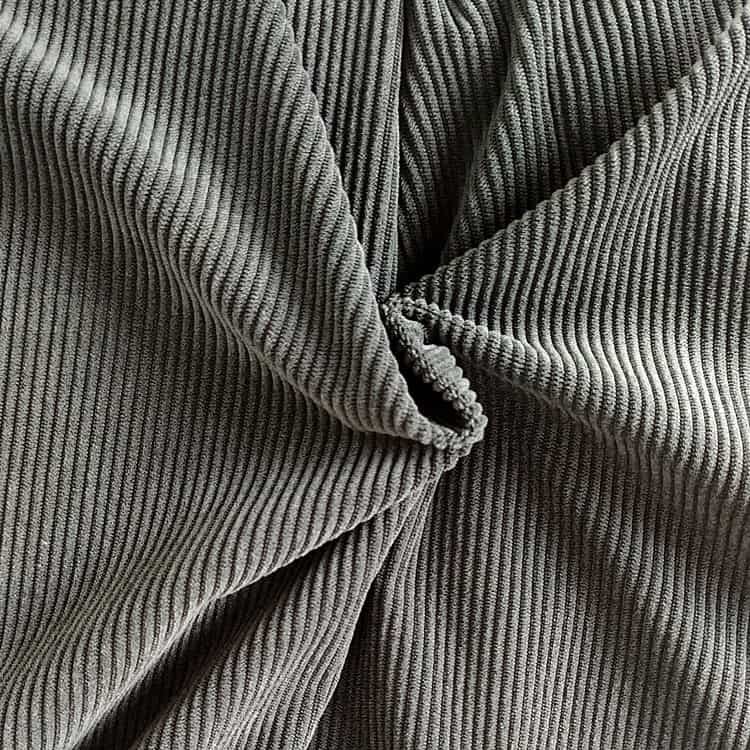
Pigment-dyed corduroy
Pigment-dyed corduroy is a fabric treated with pigment dye. It has a unique, faded look and a soft, broken-in feel. It’s used for casual clothing items and accessories, such as pants, jackets, hats, and bags. The color may fade over time, giving it a vintage appearance.
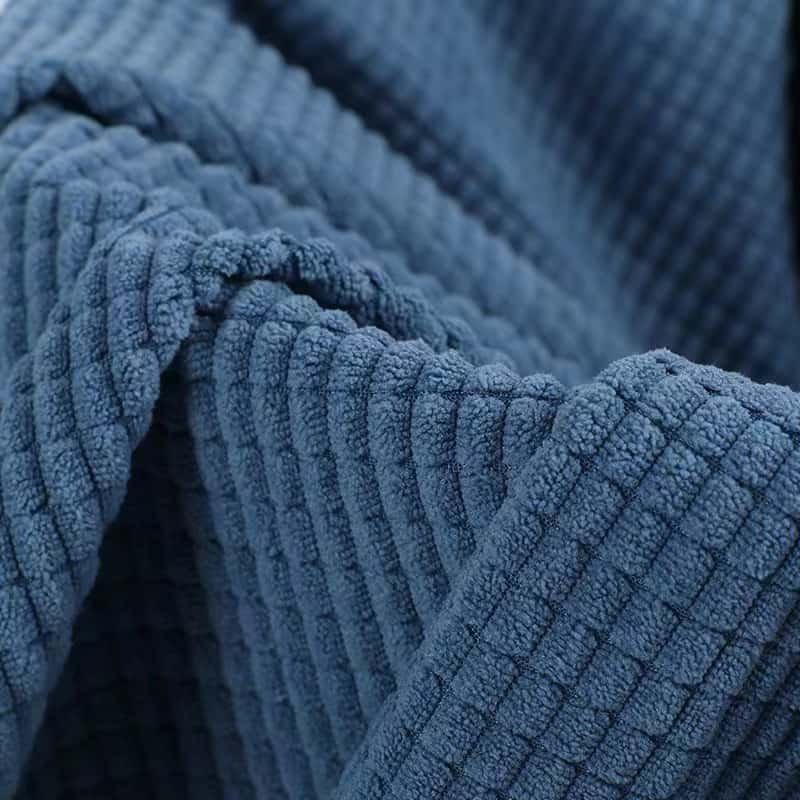
Spandex corduroy
Spandex corduroy is a fabric blend of cotton and spandex fiber. It gives it a stretchy, flexible quality, making it comfortable and easy to move in.
It’s commonly used for pants, skirts, and jackets. It is also a popular choice for children’s clothing because of its durability.
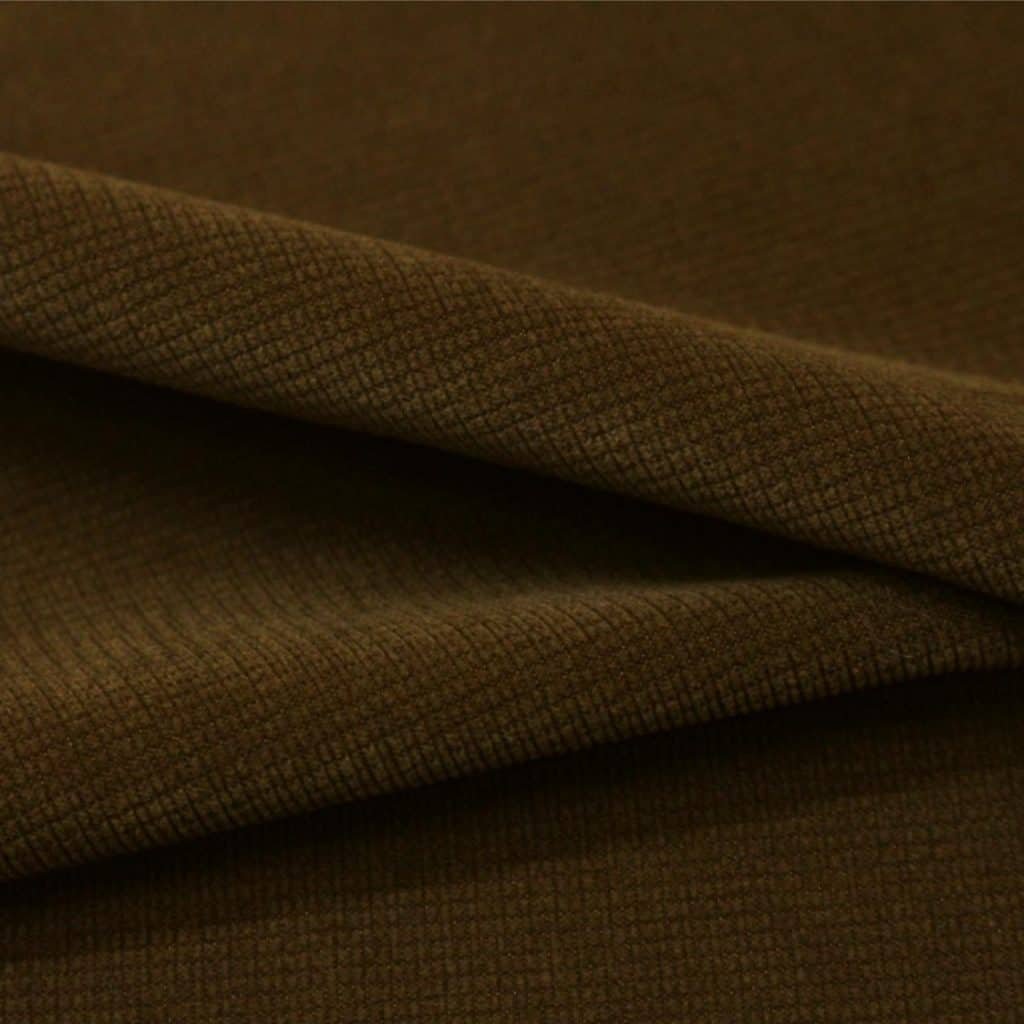
Bedford cord
The manufacturers blend cotton, wool, or synthetic fibers to make Bedford corduroy fabric. It has a soft and warm feel and unique “ribs” or ridges.
The bumpy lines on the fabric are wide and make a pretty sideways pattern that can make any design look better.
Conclusion
Corduroy has been a popular choice in fashion for many years and has made a comeback in recent years.
Corduroy pants, jackets, and skirts are winter staples on the fashion runways. They remain a popular choice for fall and winter clothing due to their warmth and durability.

